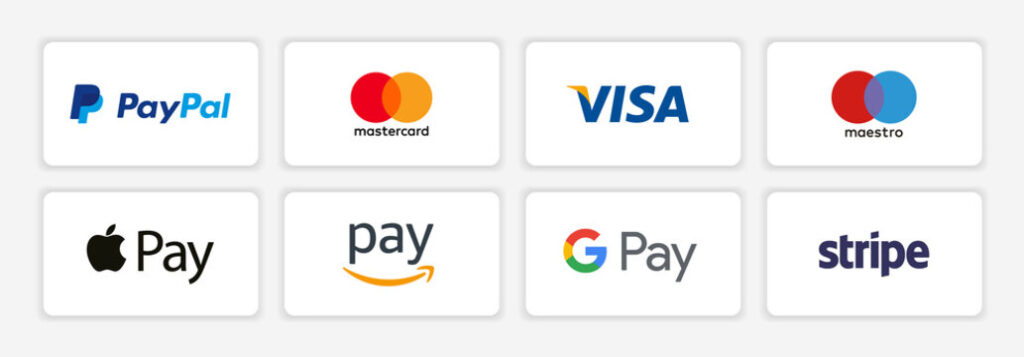Did you know that different age groups prefer to pay in different ways? Its preferable to make it easy for all of your customers to purchase from you by allowing them to pay for their items or services in the way they prefer.

Popular payment methods can vary depending on factors such as geographical location, industry, and consumer preferences. However, some payment methods are widely used across different regions and sectors. Here are some of the most popular payment methods globally:
- Credit Cards: Credit cards are widely accepted and allow consumers to make purchases on credit, with the option to pay off the balance over time. Major credit card networks include Visa, Mastercard, American Express, and Discover.
- Debit Cards: Debit cards are linked to a consumer’s bank account and allow for direct payment using funds from the account. They are commonly used for point-of-sale transactions and ATM withdrawals.
- Digital Wallets: Digital wallets, also known as e-wallets or mobile wallets, allow consumers to store payment information securely on their smartphones or other electronic devices. Popular digital wallets include Apple Pay, Google Pay, Samsung Pay, PayPal, Venmo, and Cash App.
- Bank Transfers: Bank transfers, also known as electronic funds transfers (EFTs) or wire transfers, allow consumers to transfer funds electronically from one bank account to another. They are commonly used for online purchases, bill payments, and person-to-person transfers.
- Contactless Payments: Contactless payments use near field communication (NFC) technology to enable secure transactions by tapping or waving a contactless-enabled card, smartphone, or wearable device at a point-of-sale terminal. Contactless cards and mobile payment apps like Apple Pay and Google Pay support this payment method.
- Cash: Despite the rise of digital payment methods, cash remains a widely used payment method in many regions, particularly for small-value transactions and in cash-based economies.
- Checks: While less common than in the past, checks are still used for certain types of transactions, particularly in B2B payments and for paying bills by mail.
- Prepaid Cards: Prepaid cards, such as gift cards and prepaid debit cards, are loaded with a specific amount of funds and can be used for purchases until the balance is depleted.
- Cryptocurrencies: Cryptocurrencies, such as Bitcoin, Ethereum, and Litecoin, are digital or virtual currencies that use cryptography for security. They are becoming increasingly accepted by merchants as a form of payment, particularly for online transactions.
- Alternative Payment Methods: Various alternative payment methods exist, including digital bank transfers (e.g., Zelle, Interac), prepaid vouchers (e.g., Paysafecard), and buy now, pay later services (e.g., Klarna, Afterpay).
- Recurring Payments: Recurring payments are automatic payments scheduled at regular intervals, such as monthly subscriptions or membership fees, often facilitated by credit/debit cards, bank transfers, or digital wallets.
Giving your customers more payment options helps provide a seamless shopping experience and increases the likelihood that they’ll return.
